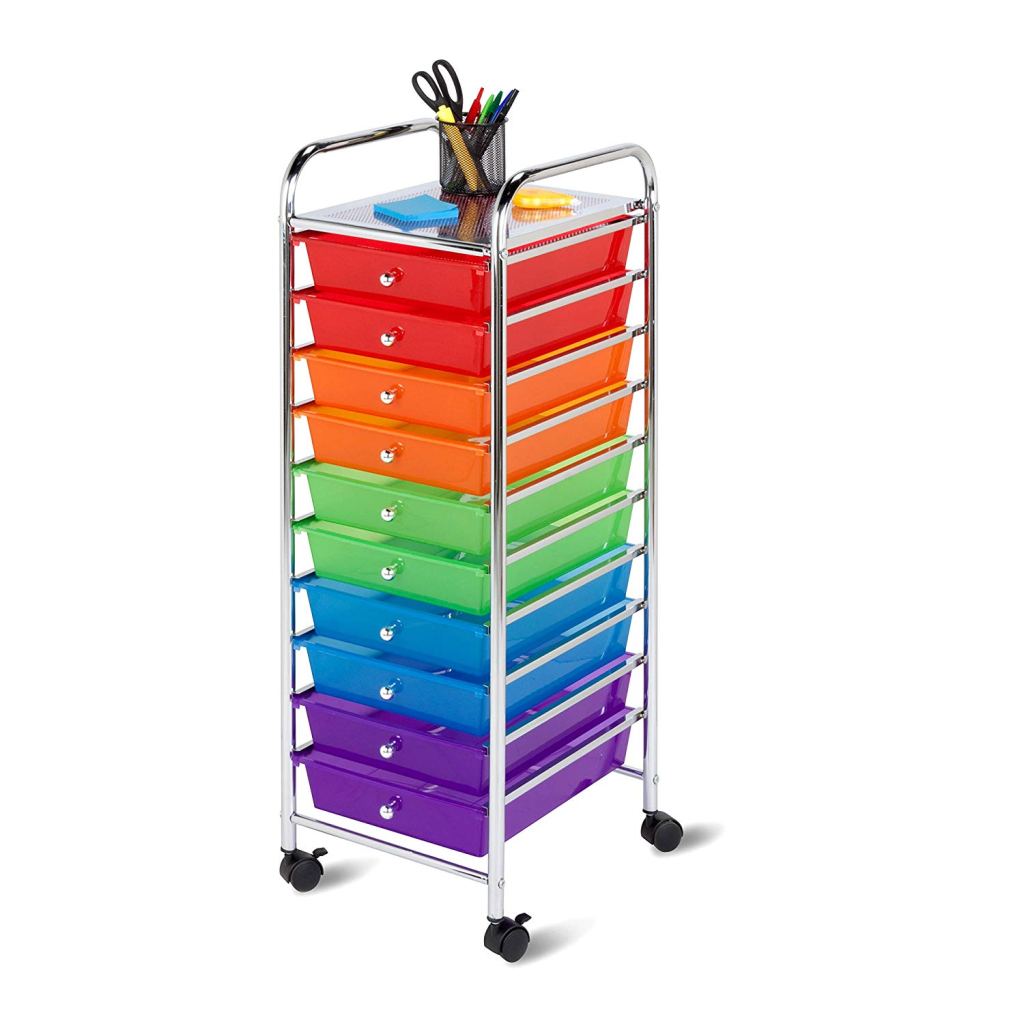If you love crafting in your downtime, chances are you also know the inherent clutter that comes along with arts and craft activities. The following tips and product recommendations will allow you to enjoy crafting while preventing your hobby from overtaking your space.
Keep small craft pieces contained by investing in a high-quality case.
The SnapCubes stackable arts and crafts case is a three-tier clear stackable storage container with compartments. It’s perfectly designed for jewelers, people who love to sew, as well as those who do beadwork. Small compartments within each layer of the case keep intricate pieces organized and neatly separated. A clear acrylic exterior allows for easy visibility. The case has a top handle which will make your craft supplies readily portable. The interlocking stackable design will save space.

Grab a set of wheels, and put them in motion.
When organizing craft rooms, storage carts are typically a necessity. I prefer wheeled organizer carts with drawers over immobile pieces. While stationary furniture pieces make perfect sense in other parts of the home or office, arts and craft hobbies often involve moving from place to place to gather supplies. Many people also do their arts and crafts in rooms that serve multiple purposes. This is especially true of the confined spaces in metropolitan areas like New York City. If your crafting area serves multiple purposes, you likely find it necessary to occasionally stash craft supplies out of sight or in a more favorable location, especially if you typically convert the area the room to accommodate guests, to be used as a home office, or for any other purpose that does not immediately involve crafting.
The Seville Classics Organizer Cart is available in multiple sizes to suit your crafting needs and to complement the size of your space. The car is available with 6, 8, 10, or 15 drawers. Stylistically, the cart features multicolored drawers, which work well for categorizing and sorting arts and craft supplies and keeping them organized. The cart is wheeled, which makes it easy to take your crafting to other parts of the home or to stash your supplies quickly when you need to make space.

Another wheeled option, the IRIS 7-Drawer Rolling Storage Cart includes an organizer top, which is a simple compartmentalized tray that can house scissors, a hole punch, and other hand tools. The seven drawers are comprised of four shallow drawers in three deep bins. The shallow drawers are ideal for storing smaller crafting supplies while the deeper drawers are the perfect places to stash away incomplete craft projects that require days or weeks to finish.

Organize your desktop.
Keeping your craft room desktop organized can be a challenge. This is especially true for those who need boundaries and separation, neither of which a which an expansive open desktop provides. Fortunately, there are tools that can help you compartmentalize and organize your crafting desktop. The mDesign Lazy Susan Turntable Storage Organizing Container is perfect for organizing larger craft supplies. Divided into five compartments, the turntable storage container is spacious enought to accommodate supplies like glues, containers of glitter, and tubes of paint. A small cylindrical center compartment is sized for supplies like paint brushes, glue sticks, Exacto knives, and sponges.

Get a good desk or craft table.
In a craft room, your work surface is everything. A good craft desk will eliminate the need to purchase many different organizing and storage products. The South Shore Crea counter height craft table is a versatile piece of furniture for novices and for avid crafters. Taller than the average desk, the Crea craft table lends itself to working while standing or while seated on a stool or bar height chair. This craft table has ample storage including interchangeable modules, a wide drawer, and removable shelves. Its scratch-proof work table surface means your Crea craft table will retain its appearance and last for years of continuous crafting.

Live in New York City? Need help organizing your space? Give us a call, or book your appointment online.















